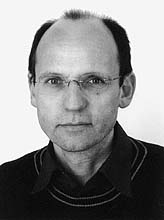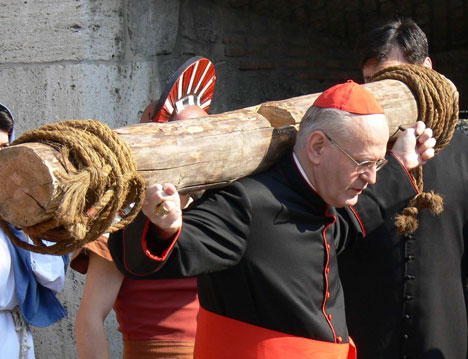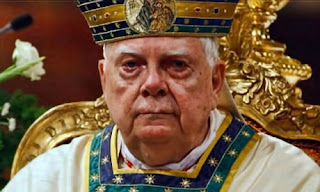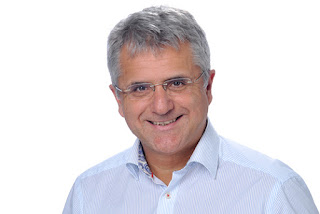Pope Leo confirms Francis' feminist line
Sister Tiziana Merletti Secretary of the Dicastery for Religious.
Sister Tiziana Merletti has been appointed secretary of the Dicastery for Religious, currently led by another woman, Sister Simona Brambilla, who was herself secretary of the curial body from October 2023 until last January, when she was promoted to prefect of the Dicastery and supported by Cardinal Ángel Fernández Artime, former superior general of the Salesians, as pro-prefect, with an unprecedented structure.
Born on September 30, 1959 in Pineto (TE), Sister Tiziana made her first religious profession in the Institute of the Franciscan Sisters of the Poor in 1986. In 1984, she obtained a degree in Law from the then Libera Università Abruzzese degli Studi “Gabriele d’Annunzio” in Teramo and, in 1992, a Doctorate in Canon Law from the Pontifical Lateran University in Rome. From 2004 to 2013, she was Superior General of her religious Institute. She is currently a Professor at the Faculty of Canon Law of the Pontifical University Antonianum in Rome and collaborates as a canonist with the International Union of Superiors General.
During his pontificate, Pope Francis has initiated a silent but profound transformation within the Roman Curia: a growing openness to women in key roles in the Vatican government. A change that breaks with centuries of male exclusivity and that, although moving cautiously, marks a turning point in the history of the Catholic Church.
Already in the first years of his pontificate, Francis had emphasized the importance of a greater female presence in the decision-making processes of the Church. But it is especially from 2020 onwards that female appointments have begun to take on a systemic character. The year of the pandemic also marks an acceleration in this field: in July 2022, the Pope appointed three women — Sister Raffaella Petrini, Sister Yvonne Reungoat and the laywoman Maria Lia Zervino — as members of the Dicastery for Bishops, the body that selects candidates for the episcopate. A historic turning point: never before had women had a voice in the choice of new bishops.
The symbolic figure of this advance is undoubtedly Sister Raffaella Petrini, of the Franciscan Sisters of the Eucharist, who in November 2021 was appointed secretary general of the Governorate of the Vatican City State. She is the highest-ranking woman in the Vatican hierarchy, a role that effectively places her at the administrative head of the Vatican State, second only to the president of the Governorate, Cardinal Fernando Vérgez Alzaga.
It is not just about religious women: Pope Francis also wanted to involve lay women with specific professional skills. Among these, Barbara Jatta stands out, appointed in 2016 as director of the Vatican Museums, the first woman ever to hold this position; Cristiane Murray, deputy director of the Holy See Press Office; and Antonella Sciarrone Alibrandi, appointed undersecretary of the Dicastery for Culture and Education.
Pope Francis has repeatedly reiterated that it is not just a matter of “making room” for women as a symbolic gesture, but of “entrusting them with real responsibilities”. In the motu proprio Praedicate Evangelium, with which he reformed the Curia in 2022, he established that even the most important dicasteries can be led by lay people and, therefore, also by women. A regulatory reform that opens up new scenarios for the future.
The recent Synod on Synodality represented a further test for female participation: for the first time, some women had the right to vote in synodal assemblies, helping to outline the pastoral guidelines of the universal Church. A gesture full of meaning, which responds to the requests for greater inclusion that have emerged from many local Churches.
While on the one hand the journey has begun, on the other there is no lack of resistance, especially in the more conservative sectors of the Curia. The question of the female diaconate, discussed several times during the pontificate, is still open, and many expectations of Catholic women risk being disappointed. However, for the first time it is publicly recognized that women are no longer just "collaborators" but protagonists of the mission of the Church.
The advance of women in key positions in the Vatican is not only a question of equity, but a transformation that affects the culture of power in the Church. Pope Francis is paving the way for a new model of ecclesial governance, more inclusive and representative, which perhaps one day will also lead to the leadership of a top-level dicastery entrusted to a woman.
In the heart of the Vatican, where for centuries only male voices have spoken, today we are also beginning to hear the echo of female voices. It is not yet a complete revolution, but it has certainly begun.










.jpeg)

Comments